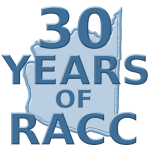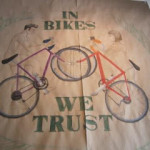![]() I had the chance to share a bit about the work of the Bicycle Alliance in a really fast interview on Comcast Newsmakers. Four minutes isn’t nearly enough time to cover everything we do so this just skims a very few of the wavetops, but here it is. (And don’t you just love the way the screen capture function captures the speaker at an awkward moment and freezes it?)
I had the chance to share a bit about the work of the Bicycle Alliance in a really fast interview on Comcast Newsmakers. Four minutes isn’t nearly enough time to cover everything we do so this just skims a very few of the wavetops, but here it is. (And don’t you just love the way the screen capture function captures the speaker at an awkward moment and freezes it?)
Watch our blog for more on all the things I got to fly through in this interview.
For those of you who would rather read than watch, a transcript of the main interview with Newsmakers host Sabrina Register (minus the intro chitchat) :
Sabrina: Bicycle Alliance–tell us about the group.
Barb: We were founded 25 years ago growing out of local bike advocates who said we need a statewide bike advocacy organization–a nonprofit that’s focused on helping grow bicycling, pass public policy that makes this state a better place to ride, an organization that would do education and outreach–really around the state–and we’ve been doing that for 25 years very successfully.
Sabrina: Twenty-five years, quarter of a century–congratulations! So it sounds like the organization has grown and even evolved some since its beginning.
Barb: Definitely. One of the things we point to as an accomplishment of the last 25 years is we have been the organization leading legislation that improves the state for bicycling. We’ve led the majority of legislation passed in the last 25 years. So that’s everything from adding those questions you have to answer on your driver’s license exam about bike law to making sure that when a kid goes through drivers’ ed bike safety is part of that curriculum so as drivers and riders interact we all know the laws. So that’s just one of the things we’ve worked on.
Sabrina: You were part of a coalition that helped pass the distracted driving law.
Barb: Yes, Text-Talk-Ticket, because that’s really important to all of us. There was actually just a study released today about Seattle pedestrian behavior and texting is a really dangerous thing for you to do as a walker as well as a driver. And if you’re on your bike you probably shouldn’t be texting either.
Sabrina: That’s probably not a good idea also! I know you’re hoping in the next legislative session to get another law on the books. What is that?
Barb: We’ve worked for a couple of sessions now; we’ve made it halfway through the process and we know we have a lot of support from around the state. It’s called the Neighborhood Safe Streets Bill.
What it would do is really a matter of local control. It would let cities lower the speed limit in a neighborhood to 20 miles an hour without having to do a really expensive engineering study. It might just be common sense to say hey, we have a school zone here, and just outside the school zone we also have a park or a library or another destination. It makes sense to have drivers just stay slower through this section.
We’d just let cities do that. Right now they can’t do it without an expensive study. So it’s a matter of local control; it’s also a matter of making the neighborhoods a lot safer for people who are walking or biking through. And that’s kids–it’s also senior citizens or folks with disabilities who maybe just aren’t moving as quickly. And so slowing the driving speed makes it safer for everybody.
Sabrina: So not only do you work with a lobbyist in Olympia but you also work with state groups and agencies like the state Department of Transportation.
Barb: Yes, we work a lot with them because once the law gets passed then it’s how it’s implemented that will really matter on the ground to the people who are riding or driving through a stretch. We’ve worked on issues like a bridge over Hood Canal that had a particularly slippery bridge decking that meant people riding across on bikes fell, and if they were falling they might be falling into the path of the drivers and creating a lot more danger for everybody.
So the local riders in the area came to us because we have that relationship with DOT to bring them in and say can we make this better for here but then can we also, because we’re a statewide organization, ask DOT to take lessons learned and share them around the state so any other bridge design would be looked at to make sure it’s safe for riders.
Sabrina: We’re almost out of time but–bike-friendly, I asked the question–we certainly are. I think we can be even more bike-friendly. And we’re hoping that bike tourism takes off as well in Washington state.
Barb: Absolutely. The League of American Bicyclists has ranked us #1 in the nation five years in a row for being bike-friendly. That’s a combination of a lot of things–engineering, education, enforcement . . . we have all these Es we measure by. We are a great place to ride a bike already and we can get even better promoting bike tourism. It’s really great for small towns. It’s good for the people who live there every day to have that business riding through on two wheels.
Sabrina: So that’s something that’s a nationwide effort but certainly something we want to see emphasized here in Washington state.
Barb: Yes. We’re helping map the US Bicycle Route System as it comes through the state. It’s across the country–it’s also international coming down from Alaska through Canada. So we’ll be bringing money into the state with our two wheels.




One Trackback
[…] convenient, safe, and accessible for bicyclists. Executive Director, Barb Chamberlain, was recently interviewed on Comcast Newsmakers. Barb highlights Washington State’s #1 bike-friendly ranking in the country as well as […]